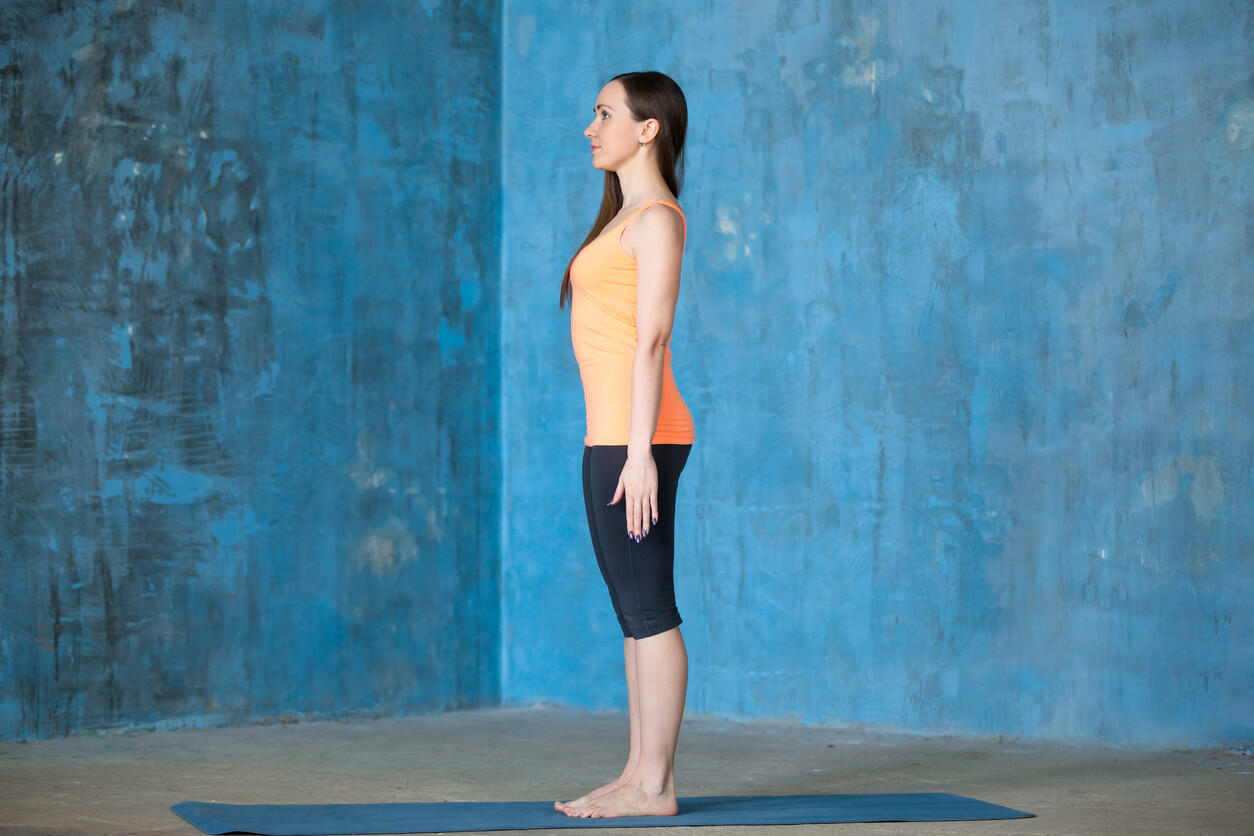When I think about proper posture, the corners of my mouth curl up with an ironic smile. I have distinct memories of how my grandmother was hell-bent on having me and my sister stand with good posture. She would lecture us all the time to, “STAND STRAIGHT! Walk as if you are balancing a book on your head.” She would even hand me books to practice with. Imagine me walking down the street in Brooklyn with a book on my head trying to balance it. I remember the flat part of my head was at an angle where my head would have to tilt a bit to keep it on my head, so I didn’t really get the exercise because my neck would spasm sometimes, but I would practice because it was a challenge and as a tomboy, I loved a good game that was physical. Who knew that almost 4 decades later, most of my day would revolve around teaching other people how to stand straight and have proper posture? It still blows my mind how I ended up taking her pet peeve to the next level.
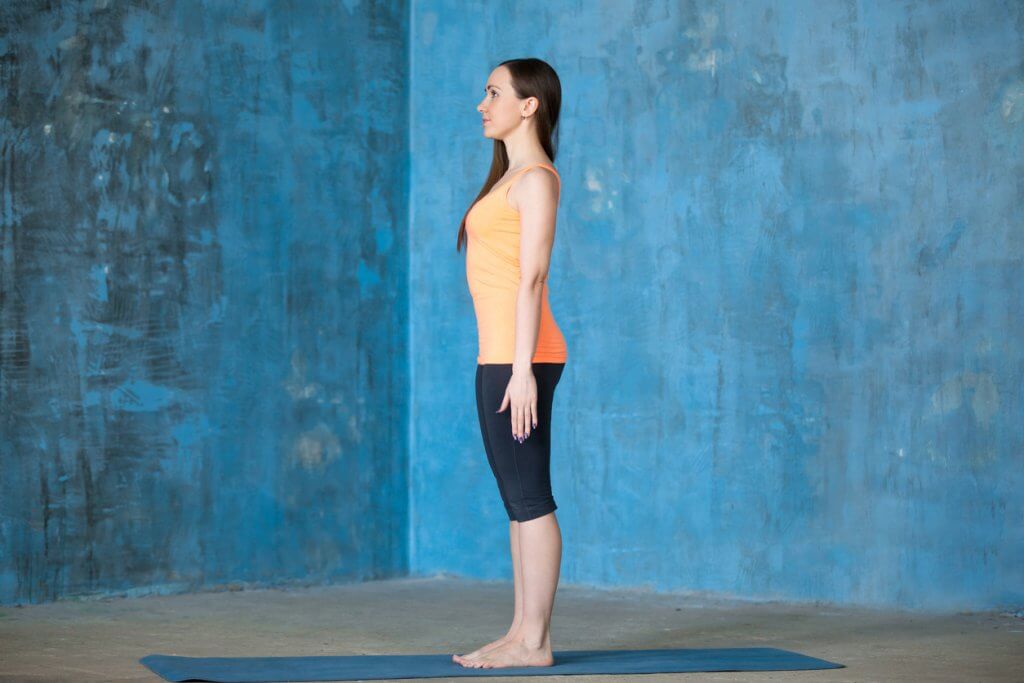
Posture affects health and well-being in every way possible:
Physically – In this age of computers, cars, planes, couches with televisions etc. we have developed what I call a “postural epidemic”. Over the past 10 years, my patient load has shifted from athletes and acute injuries to chronic neck and back pain, shoulder pain, headaches, forearm pain, hip pain, and all sorts of pain from hours upon end slumped over computers and poor posture in general.
- Chronic Pain – Poor posture leads to chronic physical pain. “Forward head,” which is the coined term for your head jutted forward over your body, closes the space between your vertebrae where the nerves leading to your head and arms come out, leading to neck pain, numbness, tingling and eventual weakness. I have patients that come in that can’t hold a cup because their neck is so far in front of their shoulders that the nerve to their fingers is being pinched. Rolled shoulders create similar symptoms because the nerves that go to your arms go through your shoulder area to get there and if you close the space there, the nerves get pinched there too. – Poor posture leads to chronic physical pain. “Forward head,” which is the coined term for your head jutted forward over your body, closes the space between your vertebrae where the nerves leading to your head and arms come out, leading to neck pain, numbness, tingling and eventual weakness. I have patients that come in that can’t hold a cup because their neck is so far in front of their shoulders that the nerve to their fingers is being pinched. Rolled shoulders create similar symptoms because the nerves that go to your arms go through your shoulder area to get there and if you close the space there, the nerves get pinched there too.
- Migraines – Migraines are also created by forward head. If you don’t correct your posture, the bones in your neck eventually degenerate and the pain can become permanent, only temporarily relieved by epidurals and fixed by surgery – and once you open up the body, it’s never the same.
- Mid-Low Back Pain – Rounded shoulders also leads to mid and low back pain. When your shoulders are rounded, your head starts to lean forward towards the ground. Our eyes like to look at the horizon so when you can’t bring your shoulders back to look ahead of you, you end up hyperextending your mid and low back to lift your head back up. This leads to low back and leg tightness, pain and debilitation.
- Sciatica – Slouching in your chair reverses the normal angle of your lower back, pushing the discs into the nerves in your low back leading to pain down your legs, familiarly known as “sciatica” because you’re compressing the sciatic nerve. Another common occurrence of sitting like crap is a rotated pelvis on one side, which also gives low back symptoms. The problem with a rotated hip is that it doesn’t show up on x-rays and MRI’s, so your doctor will just see how the change affected your disc and will treat it as so. To truly fix that, a physical therapist needs to put your pelvis back into the proper alignment and stretch the muscles that are keeping it out. Compression on your low back can also lead to numbness, tingling, and pain in one or both lower extremities.
- Physical Fatigue and Lack of Concentration – Fatigue comes quicker with those that slouch because once your neck is too tight, blood flow to the brain is more difficult. Poor posture tightens the secondary breathing muscles such as the scalene and levator, making it more difficult to breathe. By losing the ability to breathe properly, oxygen can’t get into your body as efficiently. I haven’t done studies on how bad that can be for your body, but I doubt it’s good.
Our bodies were meant to move and be fluid so that our circulatory and lymph system can function optimally, our discs stay uncompressed, and our food metabolized. Good posture is a major component in minimizing the fact that we don’t move a lot and help us stay pain free, or “vivie” (a word I made up to mean “pain-free”) and to stay out of my office to begin with.
For other people, poor posture is an eyesore. Have you ever seen an actress in a beautiful dress with poor posture? Makes me throw up in my mouth a little bit, although I am personally more sensitive to that as it’s what I do for a living. What a waste of all the makeup and stylist time if you are going to stand like an ape. Bottom line – it’s ugly.

Mentally & Emotionally – The way you stand and sit reflects to the world who you are as a person and how you might come across when you are out of balance versus balanced. Poor posture carries an energy with it. It can be read as lack of self-confidence, shyness and closed communication. Depression, fatigue, and insecurity are just some of the feelings that are associated with shoulders forward and forward head posture. “Keep your chin up” and “hold your head high” were not made up for nothing. Standing straight exudes a sense of pride and confidence, and promotes happiness. By standing straight, you actually feel better. Try it right now. I’ll bet you feel sexier. “Strut your stuff” carries an energy with it. There is a higher self-esteem that good posture gives you. When my patients stand straight and I fix their posture, I see the smile spread across their mouths. They fall more in love with themselves in a healthy way.
The bottom line is, by correcting posture, we also inadvertently heal issues emotionally connected to imbalance. Results are an increase in confidence, higher self-esteem, looking more attractive, more open and communicative relationships, more physical and mental energy and focus, as well as just feeling happier throughout the day.

What are some of the main reasons people develop poor posture?
As mentioned above, we are sitting and staring at a screen without moving our bodies for hours at a time. Children are starting to stare at iPads and iPhones at 6 months of age. Their bodies are actually developing with feedback to have poor posture and its getting more and more challenging to fix at younger and younger ages.
If you sit or stand crappy for long enough the muscles actually change their length. Picture the analogy of a circus tent where you have the poles and the guide wires. If the guide wire on one side is too tight, the pole will lean in that direction. Even if you push the pole back, if you don’t loosen the tension on the guide wire, the pole will continue to lean. Specific repeated stretching is necessary to correct the imbalance.
Gravity never takes a vacation, so any angle that we are out of alignment while we stay in these imbalanced positions will continue to get more extreme over time. Our bodies readjust to the constant abnormal position and literally shorten or lengthen their fibers into a more permanent state. Starting from the pelvis, people think sitting is OK with a c curve pelvis (tucked under us). This slouching is really the opposite angle that it should be. As a result, everything up the spinal chain repositions itself based on that opposite curve base. From the top of the spinal chain, because we are holding our necks in this slightly downward angle for hours on end without stretching, our scalene muscles are getting overly developed to the point where I have 12 year olds coming to me with severe neck pain. Your levators, traps, and all the muscles around your neck get tight because they are trying to hold your head up as you stare at the screen. Your pectorals or chest muscles also get tight adding to rounded shoulders, and then you have to extend your neck more to get your eyes level, compressing the discs in your neck even more.
Other reasons for poor posture are the following:
- People who are tall and were tall at an age where it wasn’t cool to be tall have the tendency to slouch, thinking that the slouching will make them less noticeable (which you know didn’t work anyway). Leaning their heads way forward is also how they get closer to people to hear them in social situations.
- Women with big breasts have tried to hide them and/or the heaviness of the breasts by bringing their shoulders forward.
- Nobody ever taught them how to sit and stand straight. Nobody taught them the importance of maintaining good posture at a young age, and if they did tell them to sit or stand straight, they never explained exactly how.
- People with poor self-esteem, shyness, depression or post-trauma tend to have poor posture because they are literally “brought down” by their situation.
On the other hand, good posture both sitting and standing will keep your bones and muscles where they should be, minimizing the tightness of aging and keeping you healthy. With good posture you can focus longer on what you’re doing because your body isn’t suffering and you’re breathing better.
If you correct your postural habits early enough in life, you can avoid some of the following: Months in physical therapy, epidurals, migraines, and operations to manage degeneration and disc herniation. You go into the world with more confidence, energy and you just look better. Preventative medicine is the new way to stay out of the health care system that pretty much bleeds your bank account. Wouldn’t you rather take the money you earned all those years and spend it on a new house, vacation or spa days instead of drugs, surgeries and therapy?
If you want to get that job, that audition, that girl to go out with you – show good posture. It displays a sense of self-care that others subconsciously read off of you. You will get more respect from other people when you have good posture. So stand up straight, sit straight and feel better in all ways possible.
The Importance of Correct Posture
At every moment of the day, we are either moving towards a state of wellness and balance, or moving away from it. In this age of computers, cars and couches, we end up staying in specific positions for long periods of time. It’s bad enough that some of our muscles literally shorten into imbalanced positions as a result, but poor posture creates an environment for our muscles to greater that imbalance until a point where our spinal discs are being compressed, our nerves are being choked, our circulation gets compromised and our muscles either atrophy or get so tight they are like bars of steel – all of which result in PAIN. And I don’t just mean minor pain. I mean the pain that doesn’t let you go to work, sleep or socialize – and your life revolves around how much pain you are in that day. Not a pretty way to spend the day.
Choosing proper postural positions is a constant reminder to your body to maintain balance. When you sit properly, your vertebrae are sitting on each other in a way that your back muscles don’t have to be turned on when not necessary and your neck muscles don’t choke your arm nerves. This preserves your energy, alertness, and focus. Standing properly can also preserve your lower back and neck from pain and the above scenario. Your body has enough to do throughout the day. Poor posture adds to fatigue and burnout.
Standing and sitting properly also effects how you are perceived by the world. When you sit with your shoulders slumped forward and your head jutted down, your energy is “closed”. It’s a way of telling the world signs that you just don’t care or you are sloppy etc. It’s basically ugly to look at as well. Nobody looks at someone slumping in their chair as sexy, I can tell you that. Sitting and standing straight with your shoulders back and your head held high shows confidence, open, high energy, loving strong signals. It’s also like the chicken and the egg – are you slumping because you’re tired or are you tired because you’re slumping?
You can determine if your posture is poor by the following:
Do you sit with your knees out to the side?
Is your pelvis tilted to your face when you’re sitting?
Is your head in front of your body?
When you bring your shoulders back, does your back extend instead?
Does your standing posture resemble more of an ape then a person?
If you answered yes to any of the above, then read how to sit and stand straight right now:
Preventative medicine and habits are the best way to care for your body and stay out of the health care system.
Physically, I fix posture by massaging and stretching the muscles pulling the person out of position, mobilizing the spine into balance, strengthening the weak postural muscles and teaching proper ergonomics. Mentally and emotionally I show the client the difference between how it “feels” to be out of balance and how that blocks your productivity, self-esteem, and emotional freedom – and can take a beautiful girl and make her look uglier.
For that reason alone people stand straighter. 🙂
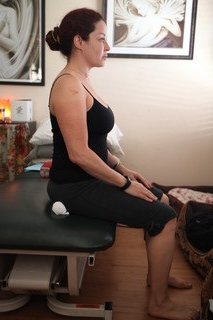
How to Sit Straight:
Sitting Straight – Sit with your feet shoulder length apart, with your heels even with the width of your hips. Keep your legs at 90 degrees at the knees and the hips – in other words UNCROSS YOUR LEGS! Crossing your legs makes your pelvis imbalanced. If your pelvis is imbalanced, it’s as if the base of your house is imbalanced. If your basement is off, your first, second and third floor will be off. In between your first and second toe should be even with your heels – even with the bone protrusion on the top of your shin (tibial tuberosity) – even with your hips (ischial tuberosities). Your pelvis should be angled so that the 2 bones on the bottom of your buttocks are closest to what you’re sitting on. You should have a small curve at the bottom of your back (not the middle). Slide your shoulders back without extending your mid-back and tuck your chin so that your head is on your body.
Another version I teach patients is with a rolled up hand towel:
Begin with a hand towel rolled up (if possible taped so it stays in tootsie roll shape). Sit on a stable surface (preferably a firm surface compared to a soft couch). Find the angle in which your “butt bones” (ischial tuberosities) are closest to the sitting surface. You can figure out how to feel the two bones at the lowest part of your tush and their angle by tilting your pelvis forward and backwards slightly while feeling more and less pressure on those bones. Make sure that you are sitting directly on top of them and not slightly in front or behind them. Once you find this optimal angle for your pelvis, lean forward slightly keeping your back straight and place the towel roll under the fat of your tush that is BEHIND the bones, not directly under the bones themselves. Sit back up and find that optimal angle again. Slightly contract your lower abdominals “like you have to go to the bathroom but don’t want to”. This will secure your lower “lumbar angle” and re-enforce pelvic stability. Once this is completed, make an effort to relax your upper body, especially shoulders and neck. Make sure that you are creating your lumbar arch from the lowest levels of your spine. The top of your low back “rainbow” is at the same level as your upper abdominal or “t-point” is, so make sure your upper abdominals are contracted slightly as well. Make sure your mid-back is not overly arched (creating a look like your upper body is in front of your lower body). Lastly pull your shoulders back and down using your mid back, not your neck and RELAX YOUR NECK.
Driving – The same goes for driving or any other sitting position. When you enter your car to drive, lean forward and shove your buttocks as far back as it will go, sticking your butt out a bit into the corner of the seat. Lean your body back onto the chair over your hips. Keep the back of your seat relatively vertical versus reclined. You might have to adjust your mirror a little higher to remind yourself to sit straight as well.
Lifting – When you are lifting objects, make a wide stance and bend from your knees and your hips versus leaning over from your low back. Most low backs are weak areas for people because they sit all day and are easily injured. Think of lifting with your legs as if you’re doing a squat exercise in the gym. Mindful movement is like doing mini workouts throughout your day. 🙂
Since we can’t avoid sitting throughout the day, the following are a few stretches and exercises that help maintain proper posture:
Neck stretch – Start in proper sitting posture with buttocks slightly arched and abdominals contracted. Put your right hand behind your back with the intention to lock the shoulder blade into position or hold on to the bottom of a chair seat. Keeping your chin tucked, reach your left hand over your head and grab by your right ear. Lean and pull your neck to the left. When you feel a muscle pulling, stop there and give your neck muscle time to “let go”. That might take a minute or 2 or 3…Once the muscle lets go, pull lightly to feel the next tight place. Try not to let your head start going forward to do a “better stretch”. The best stretch is one where you find your tightness and talk to it there. Once you have exhausted going straight ear to shoulder, only THEN can you start to rotate your head to look behind your right shoulder. Make sure to KEEP YOUR CHIN TUCKED throughout the range. You will probably start to feel stretching in the front of your neck versus the side. Do this for a couple of minutes. Then slowly get out of the stretch to starting position and switch sides.
Pec stretch in the doorway – Stand in a doorway with one foot through the doorway and your forearms on doorframe. Move your forearms to different levels on the doorway and slowly lean through the doorway feeling the stretch on the front of your shoulders. Return to standing by using your front leg to push you back as not to strain your stretched out pecs and shoulders. Change the angle of the stretch by moving your forearms up or down from your first position and repeat stretch. Find all the different angles that your shoulders are tight and lean into the tight angles.
Piriformis Stretch – Sit up straight and pull one leg up, resting your ankle on your opposite knee. Make sure your leg is parallel to the floor. Slowly bring your chest forward until you feel your hips begin to stretch. Make sure your back remains straight through the whole stretch. Stay in that position for 2-3 minutes then slowly raise your body back up. If you would like, perform the stretch again. Once you have finished one leg, move on to the other leg and repeat the same.
Tabletop – Lay on your back with shoulder blades “back and down”, sliding your hands towards your feet with your knees bent. Keep a small arch in your lower back, keeping your mid and upper back on the floor. Make sure your feet and knees are even with your hips (shoulder width apart). Make sure that your fingers are actively reaching for your heels in order to keep your neck shut off as to turn on your armpit muscles. Without moving anything in your upper body, slowly lift one leg 90/90 towards midline of your body – meaning your shin is even with the floor but in the air – look down if you have to. While only using your lower abs and hip flexors (NOT YOUR NECK, which you can work on by reaching those fingers) lift the second foot off the floor to 90/90 as well and squeeze your thighs together. Hold for as long as possible without using your lower back or neck. Usually hold until you feel burning and shaking in your abs and hip flexors plus 10 seconds. Slowly lower one leg at a time back to the floor. Repeat 5 sets of “holding as long as possible without having to use your neck or back.”
Know your game so you know how to play – In other words if you know your job entails being seated for 10 hours a day, make sure to get into good habits of stretching, exercising and drinking enough water to balance out the tightness you get from being in one position for so long. Once your body acclimates to being in the right position, it will also become the most comfortable one for you.
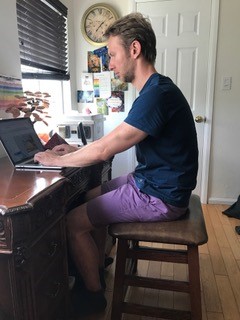

If you need help sitting correctly, you can purchase a bottoms-up posture seat for your office or car: https://www.vivietherapy.com/product/posture-seat-universal/
If you need help remembering to keep your shoulders back, you can purchase a clavicle brace: https://www.vivietherapy.com/product/clavicle-brace/
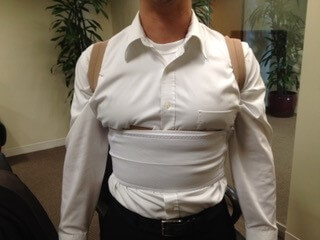
If you want extra support for your mid-back, buy a rib belt (It’s our best seller at Vivie Therapy): https://www.vivietherapy.com/product/rib-belt/
I also suggest going to a physical therapist and getting aligned so you know what balance feels like. Your therapist can also evaluate your posture and give you recommendations, postural education and teach you proper form with your exercises so you can feel confident in preventing your pain and staying vivie (pain free).
Hold your abs in with everything you do – Your center of force comes from in front of your second sacral vertebrae which is the level of your low abs near your pelvis. By holding in your abs before you move, your body will want to choose the correct muscles to perform your movement instead of always choosing your low back or neck, whether it’s getting out of a chair or walking through the mall.
Good posture is a staple of living a healthy life. I hope this information was helpful for you to live a Vivie life.
